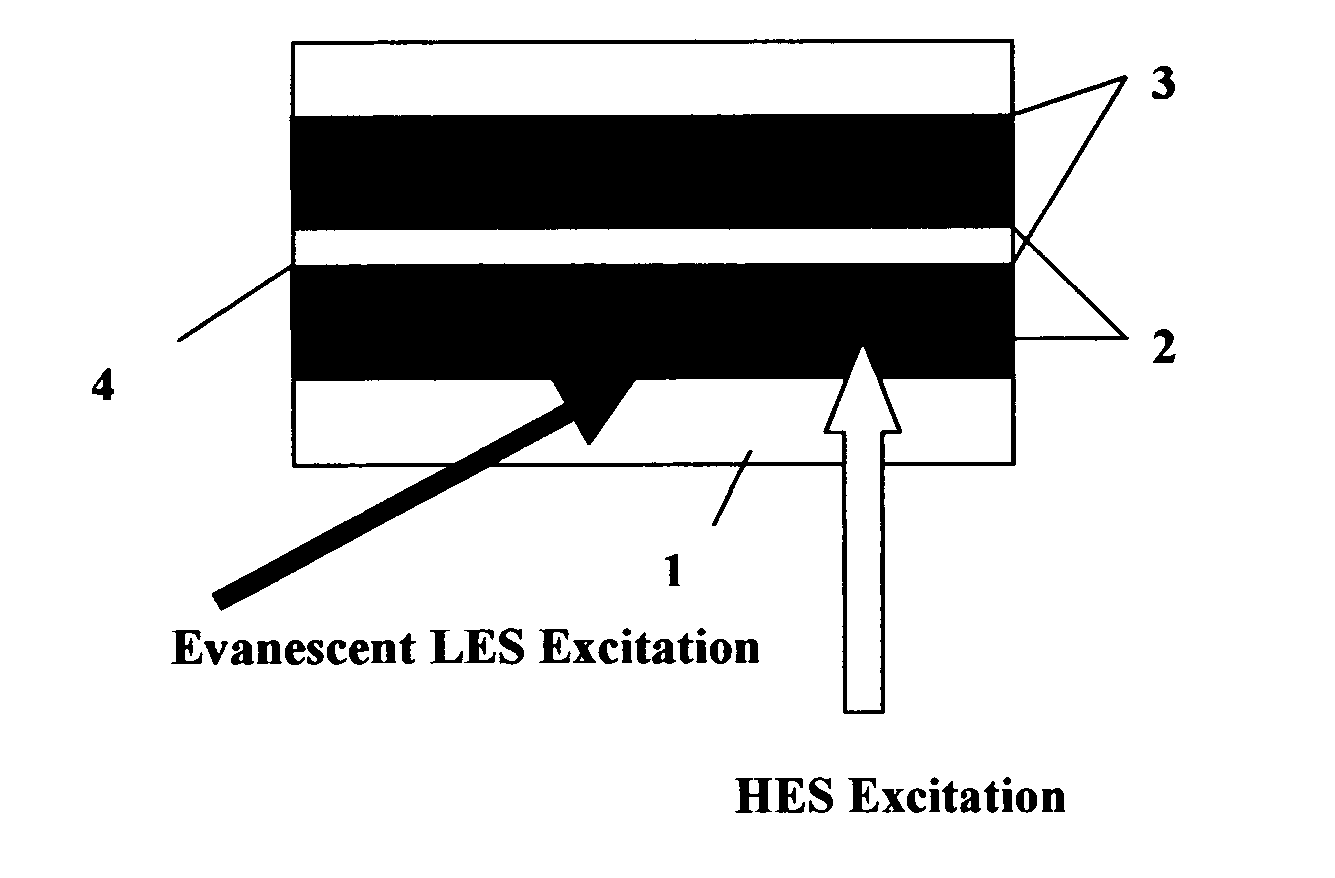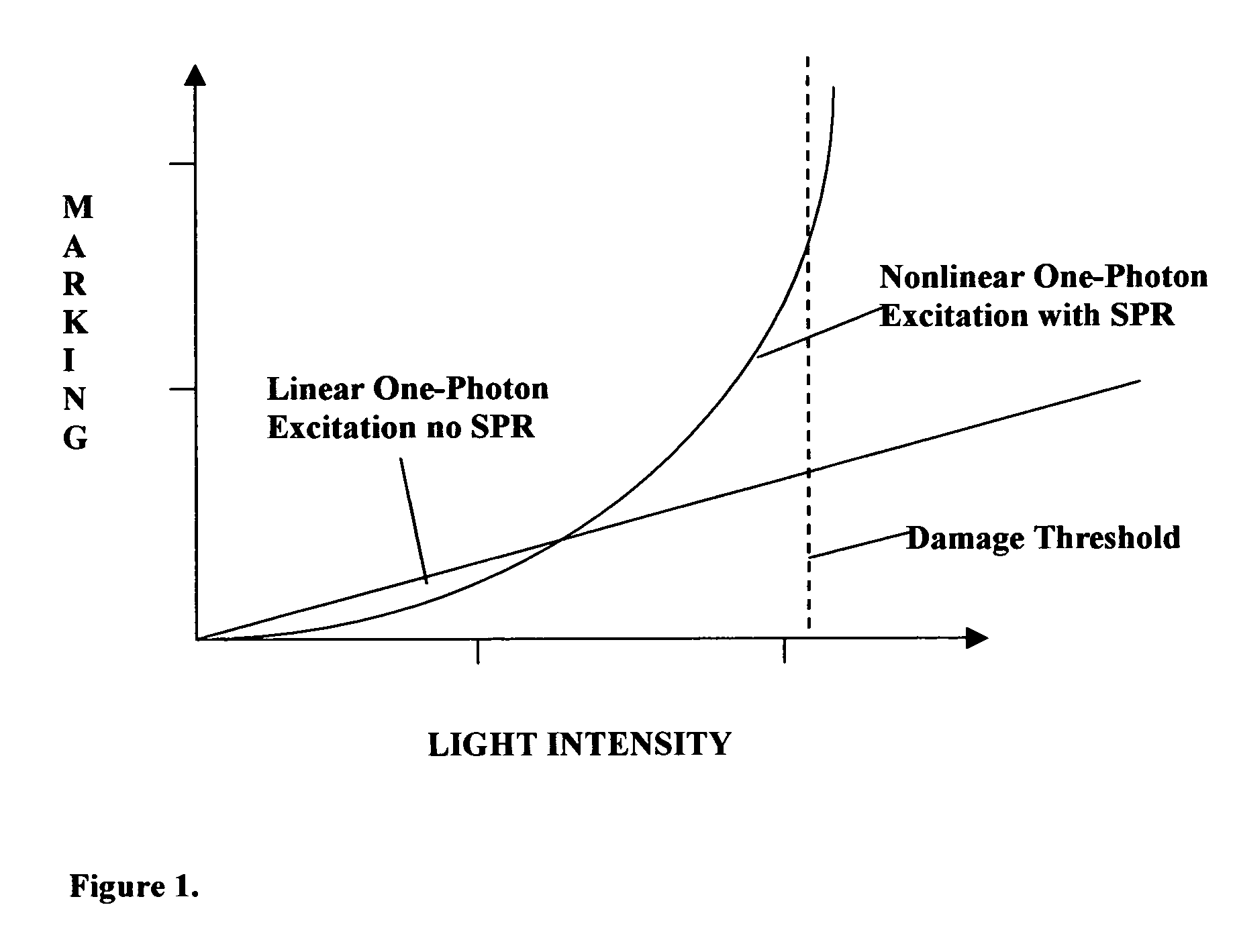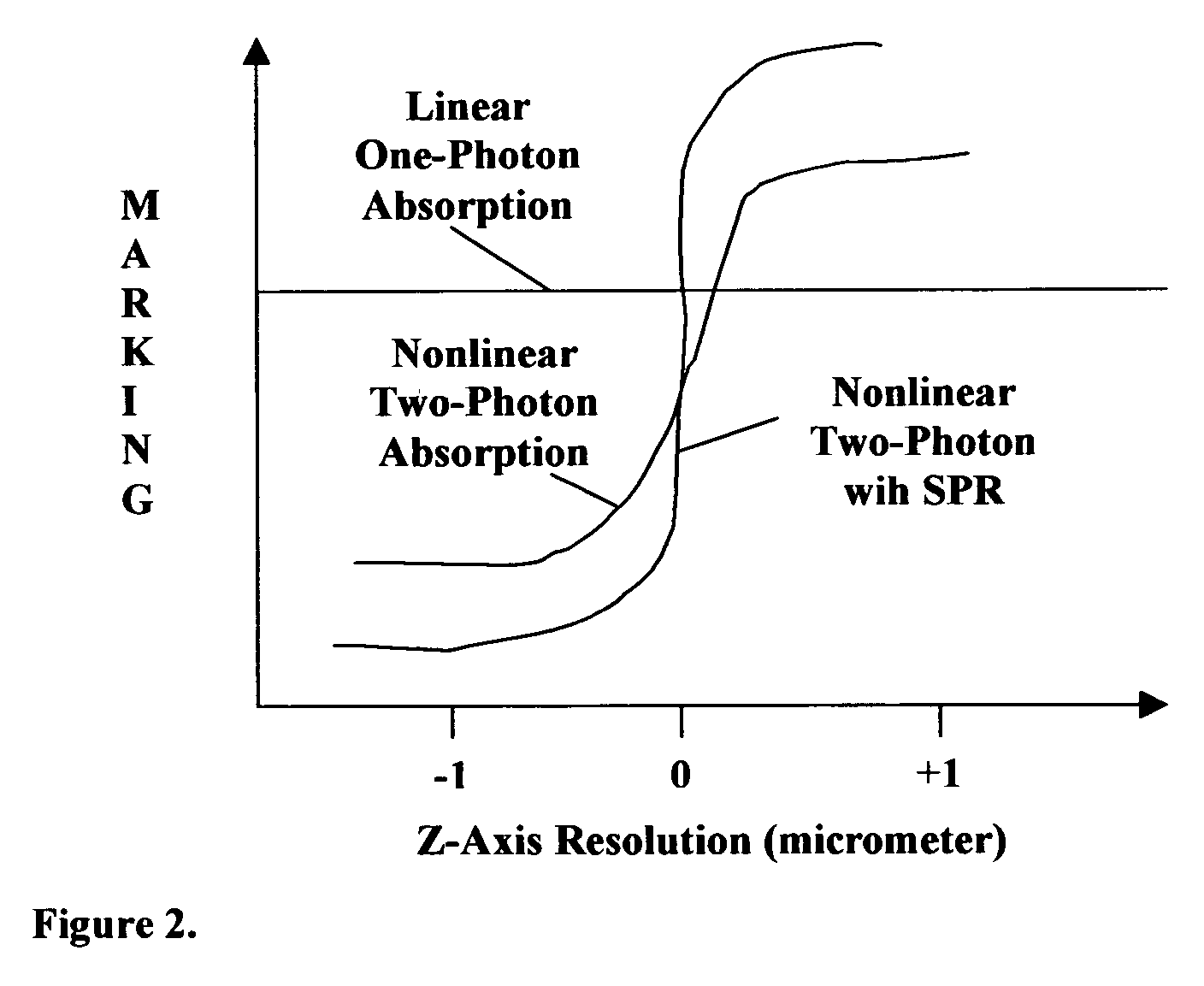Plasmon-enhanced marking of fragile materials and other applications thereof
a technology of fragile materials and plasmons, applied in nanoinformatics, biomass after-treatment, instruments, etc., can solve the problems of inability to use current marking techniques in many applications, carcinogenic to the body, and damaged biomolecules cannot be used for further biomaterial production and research, so as to achieve enhanced plasmon absorption and multiband absorption, efficient marking, and enhanced plasmon absorption.
- Summary
- Abstract
- Description
- Claims
- Application Information
AI Technical Summary
Benefits of technology
Problems solved by technology
Method used
Image
Examples
Embodiment Construction
1. Abbreviations and Definitions
[0028] marking—a process in which a substance or material under chemical and / or physical interactions changes its chemical-physical properties
[0029] SPR—surface plasmon resonance generated in a nanoparticle under illumination by electromagnetic radiation and other forms of energy
[0030] one-photon mode of excitation—process in which molecule is excited by a one photon absorption event
[0031] two-photon mode of excitation—process in which a molecule is excited by simultaneous absorption of two photons
[0032] multi-photon mode of excitation—process in which a molecule is excited by simultaneous absorption of three or more photons
[0033] step-wise mode of excitation—process in which a molecule is excited by absorption of one photon and subsequently by absorption of second photon
[0034] up-conversion mode of excitation—process in which a molecule is excited by a photon whose energy is lower than that of the lowest excited state of the molecule
[0035] na...
PUM
| Property | Measurement | Unit |
|---|---|---|
| size | aaaaa | aaaaa |
| wavelengths | aaaaa | aaaaa |
| fluorescence | aaaaa | aaaaa |
Abstract
Description
Claims
Application Information
 Login to View More
Login to View More - R&D
- Intellectual Property
- Life Sciences
- Materials
- Tech Scout
- Unparalleled Data Quality
- Higher Quality Content
- 60% Fewer Hallucinations
Browse by: Latest US Patents, China's latest patents, Technical Efficacy Thesaurus, Application Domain, Technology Topic, Popular Technical Reports.
© 2025 PatSnap. All rights reserved.Legal|Privacy policy|Modern Slavery Act Transparency Statement|Sitemap|About US| Contact US: help@patsnap.com



